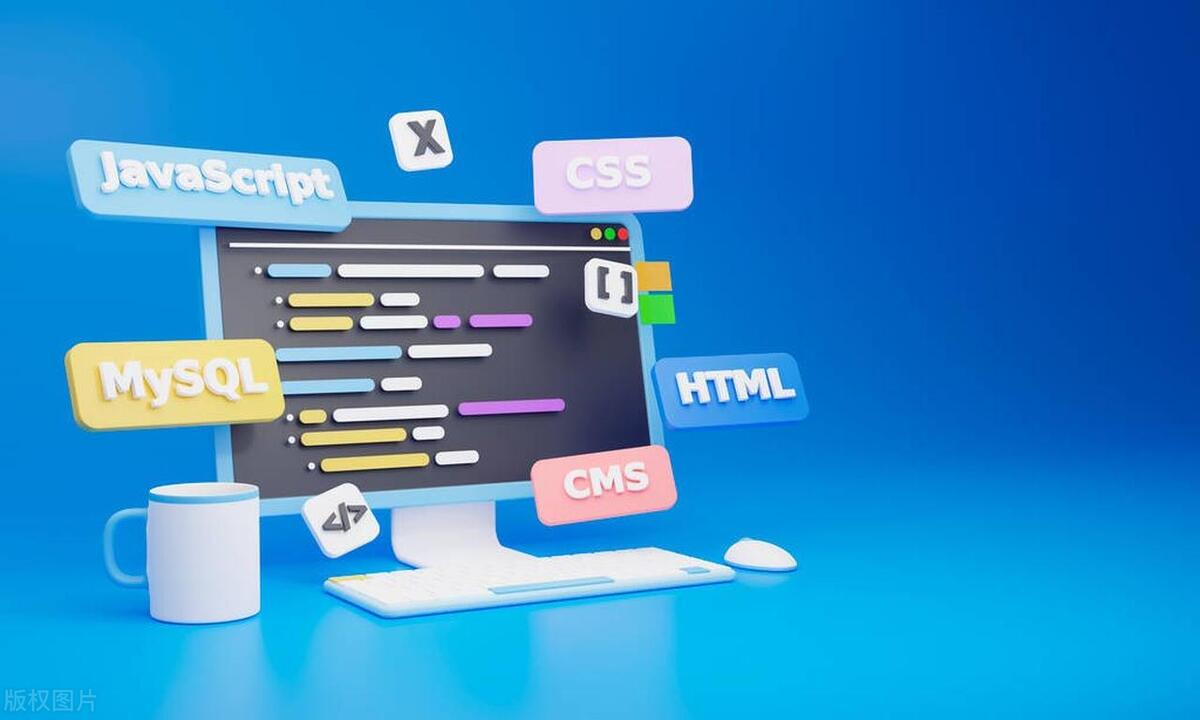First, clarify the shared dependencies: set only common libraries across multiple micro front-ends (such as React) to share and enable singleton and eager to avoid version conflicts and delays; 2. Intelligent lazy loading of remote components: combine React.lazy and Suspense to achieve on-demand loading, and preload key remote portals through prefetch to optimize user experience; 3. Optimize the construction output: implement code segmentation, tree shaking and compression in each remote module, use webpack-bundle-analyzer to analyze volume, ensure that shared dependencies are not packaged repeatedly; 4. Coordinate version and deployment: Check version consistency through CI/CD, use requiredVersion to quickly fail mechanism, follow semantic versions and interface contracts to prevent incompatibility; 5. Monitor runtime performance: utilize Lighthouse and performance Tools such as API track time-consuming remote loading and rendering, and continuously optimize. The correct use of Module Federation requires collaborative optimization in five aspects: sharing, loading, building, versioning and monitoring to achieve a high-performance and scalable micro front-end architecture.

Building perform micro frontends with Module Federation isn't just about splitting code—it's about doing it smartly so your app stays fast, maintainable, and scalable. Webpack 5's Module Federation is a game-changer for micro frontends, but if used naively, it can hurt performance. Here's how to get it right.

1. Understand the Core: Hosts, Remotes, and Shared Dependencies
Module Federation works by letting one application (the host ) dynamically load code from another (the remote ) at runtime. To make this performant, you need to:
- Define clear ownership : Each micro frontend should own its routes, state, and UI components.
- Use
sharedwisely : Reuse common libraries like React, React DOM, or Lodash—but avoid over-sharing.
// webpack.config.js (host or remote)
new ModuleFederationPlugin({
name: 'host_app',
remotes: {
dashboard: 'dashboard@http://localhost:3001/remoteEntry.js',
},
shared: {
react: { singleton: true, eager: true },
'react-dom': { singleton: true, eager: true },
},
})Key points:

-
singleton: trueensures only one version loads—critical for React. -
eager: trueloads the lib upfront during initial bundle, avoiding async delays. - Don't mark everything as shared—only libraries used across many remotes.
?? Pitfall: Over-sharing increases initial bundle size. Only share what's truly common.
2. Lazy Load Remote Components (But Not Too Late)
Loading remote components lazily improves initial load time, but you need to balance it with UX.

Use dynamic imports with React.lazy and Suspense :
const RemoteDashboard = React.lazy(() =>
import('dashboard/Dashboard').catch(() => {
// Fallback on error
return { default: () => <div>Failed to load dashboard</div> }
})
)
function App() {
Return (
<Suspense fallback="Loading...">
<RemoteDashboard />
</Suspense>
)
}But don't wait until the last second. Consider prefetching remote entries:
<!-- In index.html --> <link rel="prefetch" href="http://localhost:3001/remoteEntry.js" />
Or do it in code:
// Preload remote on hover or app idle
useEffect(() => {
const script = document.createElement('script')
script.src = 'http://localhost:3001/remoteEntry.js'
document.head.appendChild(script)
}, [])? Pro tip: Prefetch remotes when the user lands on a page where they'll likely navigate next (eg, after login).
3. Optimize Bundle Size and Build Output
Even with federation, each remote still bundles its own code. Poor optimization here kills performance.
Apply these:
- Code splitting : Use dynamic imports within remotes too.
- Tree-shaking : Avoid importing entire libraries (
import * from 'lodash'). Use named imports. - Minify and compress : Enable Terser, Gzip/Brotli in your build.
- Analyze bundles : Use
webpack-bundle-analyzer.
Also, ensure remotes don't re-bundle shared dependencies:
// In remote config
shared: {
react: { singleton: true, eager: true, requiredVersion: '^18.0.0' },
}This prevents duplication. If versions mismatch, the build warnings you—fix it early.
4. Handle Versioning and Deployment Strategically
One of the hidden performance killers is version drift.
- If the host expects React 18 but the remote uses 17, the fallback behavior can cause hydration issues or double-loading.
- Deploying remotes independently means you can't assume compatibility.
Solutions:
- Enforce version alignment via CI/CD checks.
- Use a shared dev toolkit or design system package that pins versions.
- Consider Module Federation's
requiredVersionto fail fast on mismatches.
Also, avoid breaking changes in shared interfaces. Use semantic versioning and contracts (eg, TypeScript interfaces) between teams.
5. Monitor Runtime Performance
Even if it builds fast, runtime matters.
Track:
- Time to load
remoteEntry.js - Time to render remote component
- JavaScript execution and parse time
Use tools like:
- Lighthouse for audits
- Webpack Bundle Analyzer
- Custom performance markers :
performance.mark('start:load-dashboard') import('dashboard/Dashboard').then(() => { performance.mark('end:load-dashboard') performance.measure('dashboard-load', 'start:load-dashboard', 'end:load-dashboard') })Log these in dev or send to analytics in production.
Final Thoughts
Module Federation enables powerful micro frontend architectures, but performance isn't automatic. You need:
- Careful dependency sharing
- Smart loading strategies
- Solid build optimization
- Cross-team version coordination
- Real monitoring
Used right, it gives you scalable, independently deployable UIs without sacrificing speed.
Basically: federate thoughtfully, optimize relentlessly.
The above is the detailed content of Building Performant Micro Frontends with Module Federation. For more information, please follow other related articles on the PHP Chinese website!

Hot AI Tools

Undress AI Tool
Undress images for free

Undresser.AI Undress
AI-powered app for creating realistic nude photos

AI Clothes Remover
Online AI tool for removing clothes from photos.

Clothoff.io
AI clothes remover

Video Face Swap
Swap faces in any video effortlessly with our completely free AI face swap tool!

Hot Article

Hot Tools

Notepad++7.3.1
Easy-to-use and free code editor

SublimeText3 Chinese version
Chinese version, very easy to use

Zend Studio 13.0.1
Powerful PHP integrated development environment

Dreamweaver CS6
Visual web development tools

SublimeText3 Mac version
God-level code editing software (SublimeText3)
 How does React handle focus management and accessibility?
Jul 08, 2025 am 02:34 AM
How does React handle focus management and accessibility?
Jul 08, 2025 am 02:34 AM
React itself does not directly manage focus or accessibility, but provides tools to effectively deal with these issues. 1. Use Refs to programmatically manage focus, such as setting element focus through useRef; 2. Use ARIA attributes to improve accessibility, such as defining the structure and state of tab components; 3. Pay attention to keyboard navigation to ensure that the focus logic in components such as modal boxes is clear; 4. Try to use native HTML elements to reduce the workload and error risk of custom implementation; 5. React assists accessibility by controlling the DOM and adding ARIA attributes, but the correct use still depends on developers.
 Describe the difference between shallow and full rendering in React testing.
Jul 06, 2025 am 02:32 AM
Describe the difference between shallow and full rendering in React testing.
Jul 06, 2025 am 02:32 AM
Shallowrenderingtestsacomponentinisolation,withoutchildren,whilefullrenderingincludesallchildcomponents.Shallowrenderingisgoodfortestingacomponent’sownlogicandmarkup,offeringfasterexecutionandisolationfromchildbehavior,butlacksfulllifecycleandDOMinte
 What is the significance of the StrictMode component in React?
Jul 06, 2025 am 02:33 AM
What is the significance of the StrictMode component in React?
Jul 06, 2025 am 02:33 AM
StrictMode does not render any visual content in React, but it is very useful during development. Its main function is to help developers identify potential problems, especially those that may cause bugs or unexpected behavior in complex applications. Specifically, it flags unsafe lifecycle methods, recognizes side effects in render functions, and warns about the use of old string refAPI. In addition, it can expose these side effects by intentionally repeating calls to certain functions, thereby prompting developers to move related operations to appropriate locations, such as the useEffect hook. At the same time, it encourages the use of newer ref methods such as useRef or callback ref instead of string ref. To use Stri effectively
 Vue with TypeScript Integration Guide
Jul 05, 2025 am 02:29 AM
Vue with TypeScript Integration Guide
Jul 05, 2025 am 02:29 AM
Create TypeScript-enabled projects using VueCLI or Vite, which can be quickly initialized through interactive selection features or using templates. Use tags in components to implement type inference with defineComponent, and it is recommended to explicitly declare props and emits types, and use interface or type to define complex structures. It is recommended to explicitly label types when using ref and reactive in setup functions to improve code maintainability and collaboration efficiency.
 Server-Side Rendering with Next.js Explained
Jul 23, 2025 am 01:39 AM
Server-Side Rendering with Next.js Explained
Jul 23, 2025 am 01:39 AM
Server-siderendering(SSR)inNext.jsgeneratesHTMLontheserverforeachrequest,improvingperformanceandSEO.1.SSRisidealfordynamiccontentthatchangesfrequently,suchasuserdashboards.2.ItusesgetServerSidePropstofetchdataperrequestandpassittothecomponent.3.UseSS
 A Deep Dive into WebAssembly (WASM) for Front-End Developers
Jul 27, 2025 am 12:32 AM
A Deep Dive into WebAssembly (WASM) for Front-End Developers
Jul 27, 2025 am 12:32 AM
WebAssembly(WASM)isagame-changerforfront-enddevelopersseekinghigh-performancewebapplications.1.WASMisabinaryinstructionformatthatrunsatnear-nativespeed,enablinglanguageslikeRust,C ,andGotoexecuteinthebrowser.2.ItcomplementsJavaScriptratherthanreplac
 Vue CLI vs Vite: Choosing Your Build Tool
Jul 06, 2025 am 02:34 AM
Vue CLI vs Vite: Choosing Your Build Tool
Jul 06, 2025 am 02:34 AM
Vite or VueCLI depends on project requirements and development priorities. 1. Startup speed: Vite uses the browser's native ES module loading mechanism, which is extremely fast and cold-start, usually completed within 300ms, while VueCLI uses Webpack to rely on packaging and is slow to start; 2. Configuration complexity: Vite starts with zero configuration, has a rich plug-in ecosystem, which is suitable for modern front-end technology stacks, VueCLI provides comprehensive configuration options, suitable for enterprise-level customization but has high learning costs; 3. Applicable project types: Vite is suitable for small projects, rapid prototype development and projects using Vue3, VueCLI is more suitable for medium and large enterprise projects or projects that need to be compatible with Vue2; 4. Plug-in ecosystem: VueCLI is perfect but has slow updates,
 How to manage component state using immutable updates in React?
Jul 10, 2025 pm 12:57 PM
How to manage component state using immutable updates in React?
Jul 10, 2025 pm 12:57 PM
Immutable updates are crucial in React because it ensures that state changes can be detected correctly, triggering component re-rendering and avoiding side effects. Directly modifying state, such as push or assignment, will cause React to be unable to detect changes. The correct way to do this is to create new objects instead of old objects, such as updating an array or object using the expand operator. For nested structures, you need to copy layer by layer and modify only the target part, such as using multiple expansion operators to deal with deep attributes. Common operations include updating array elements with maps, deleting elements with filters, adding elements with slices or expansion. Tool libraries such as Immer can simplify the process, allowing "seemingly" to modify the original state but generate new copies, but increase project complexity. Key tips include each






